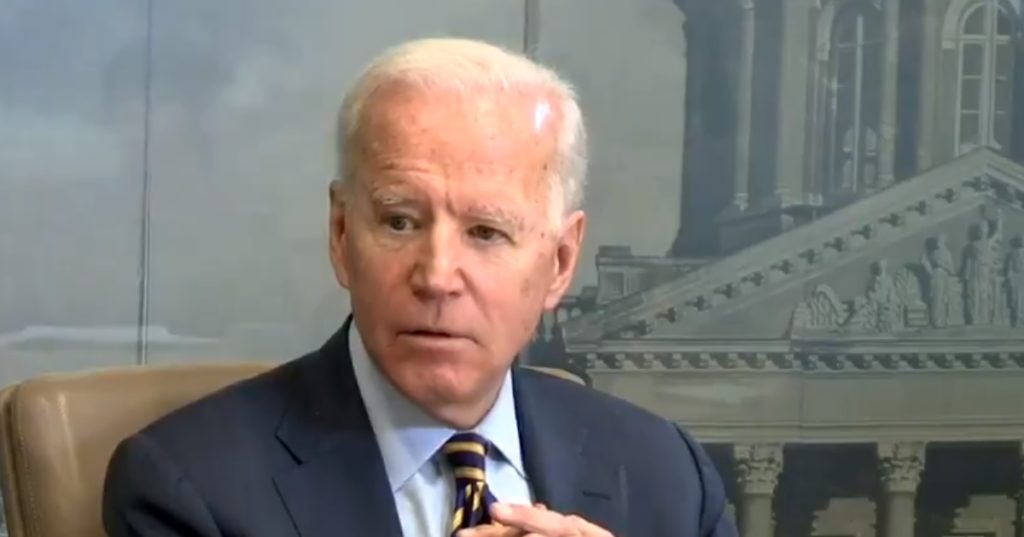The Trump administration entered into an “asylum cooperation agreement” with El Salvador on Friday. The agreement will require asylum seekers who enter El Salvador to first request protective status there and will pave the way for American assistance in El Salvador’s efforts to grow the capacity of its own asylum system.
Acting Department of Homeland Security Secretary McAleenan described the agreement as an extension of the successful efforts the administration has already made with Guatemala with regard to asylum-seeking migrants. The idea behind the pact is to “try to further our efforts to provide opportunities to seek protection for political, racial, religious or social group persecution as close as possible to the origin of individuals that need it,” McAleenan said.
While the earlier agreement with Guatemala was more in line with a “safe third country” scenario meant to compel immigrants to seek asylum there rather than passing through to Mexico en route to the U.S. border, McAleenan said that the El Salvador deal has more to do with helping get El Salvador ready to provide necessary protections and resources for asylum seekers.
“The core of [the agreement] is recognizing El Salvador’s development of their own asylum system and a commitment to help them build that capacity,” McAleenan said.
El Salvador’s role in crisis
El Salvadorean officials recognize that the epidemic of gang violence plaguing the country makes it a place many people are clamoring to leave rather than a place of refuge. This agreement is designed to help alleviate that situation and foster more hospitable circumstances for migrants.
At present, more than four people a day on average are killed by gun violence in El Salvador, but that represents a decline from last year’s daily average of nine victims. It is hoped that continued improvement on this front may lead to fewer people attempting to leave the country and head toward the U.S. border.
El Salvador’s President Nayib Bukele, who took office in June, acknowledged that his country bears some responsibility for the immigration nightmare plaguing the U.S., including tragedies such as that of the El Salvadoran father and daughter who drowned in the Rio Grande trying to cross the U.S. southern border illegally, a story which grabbed international headlines in June.
“We can blame any other country but what about our blame?” he asked. “What country did they flee? Did they flee the United States? They fled El Salvador, they fled our country. It is our fault.”
Details remain unclear
“Irregular immigration has been an issue in El Salvador for the last 30-odd years, now we’ve reached levels where it is extremely, extremely important that both the United States and El Salvador deal with this issue conjointly,” El Salvadoran Foreign Minister Alexandra Hill told reporters.
Hill views the agreement with the U.S. as a strategy to get better control over the factors driving immigration. If fewer people feel threatened by gang violence or oppressed by extreme poverty, they will be less inclined to flee to America or another country.
While the agreement sounds encouraging at first glance, it is worth noting that few specifics have been released thus far about what McAleenan touted as bilateral initiatives to combat drug trafficking, organized crime, human smuggling and a lack of economic opportunity in El Salvador.
Without many details about precisely the sort of assistance the U.S. will be offering, skeptics wonder whether this agreement will have a significant impact. Hopefully, America’s outreach to El Salvador will be in the vein of “teach a man to fish,” rather than the “eat for a day” variety.






1,335 Responses
I appreciate you sharing this post.Really thank you! Awesome.
Very informative blog post.Really looking forward to read more. Fantastic.
Thank you for your article.Really thank you! Really Great.
Thanks for sharing, this is a fantastic blog article.Much thanks again. Cool.
[url=https://homeworkhlp.com/]dissertation proposal literature review[/url] [url=https://essaywriterspot.com/]writing an illustration essay[/url]
[url=https://zestoreticbuy.com/]generic zestoretic[/url]
[url=http://essaywriterspot.com/]college paper writing services[/url]
Im grateful for the blog.Really thank you! Cool.
[url=http://customwritinghit.com/]materials and methods in research paper[/url]
I am not very great with English but I find
this really easygoing to interpret.
Very informative blog post.Much thanks again.
wow, awesome blog article.Really thank you! Will read on…
A round of applause for your article.Really thank you!
Very good blog article.Really thank you! Great.
Great, thanks for sharing this article post. Really Cool.
I appreciate you sharing this article.Really thank you! Fantastic.
Major thankies for the blog post.Thanks Again. Awesome.
I really enjoy the blog article.Really thank you!
Really appreciate you sharing this article post.Thanks Again. Really Cool.
Great write-up, I am a big believer in placing comments on sites to inform the blog writers know that they’ve added something advantageous to the world wide web!
I truly appreciate this article post.Really looking forward to read more. Cool.
Howdy this is somewhat of off topic but I was wondering if blogs use WYSIWYG editors or if you have to manually code with HTML. I’m starting a blog soon but have no coding knowledge so I wanted to get guidance from someone with experience. Any help would be enormously appreciated!
A round of applause for your article.Really looking forward to read more. Will read on…
[url=https://piroxicamonline.com/]piroxicam 20 mg capsule[/url]
[url=https://buyhydroxychloroquineplaquenil.com/]hydroxychloroquine sulfate cost[/url]
Hey, thanks for the article post.Much thanks again. Want more.
i like this super article
Thanks for sharing, this is a fantastic blog.Much thanks again. Awesome.
I really liked your blog post.Much thanks again. Keep writing.
Enjoyed every bit of your article.Really thank you! Fantastic.
[url=http://buyhchq.com/]can you buy plaquenil over the counter[/url]
Muchos Gracias for your article.Thanks Again. Want more.
I value the article.Really thank you! Really Cool.
Very good blog.Much thanks again. Keep writing.
Wow that was strange. I just wrote an extremely long comment but after I clicked submit my comment didn’t appear. Grrrr… well I’m not writing all that over again. Anyhow, just wanted to say wonderful blog!
Great, thanks for sharing this article.Really looking forward to read more. Really Cool.
Thank you ever so for you article.
Thank you ever so for you blog article. Really Cool.
[url=https://bihydroxychloroquine.com/]plaquenil 200 mg daily[/url]